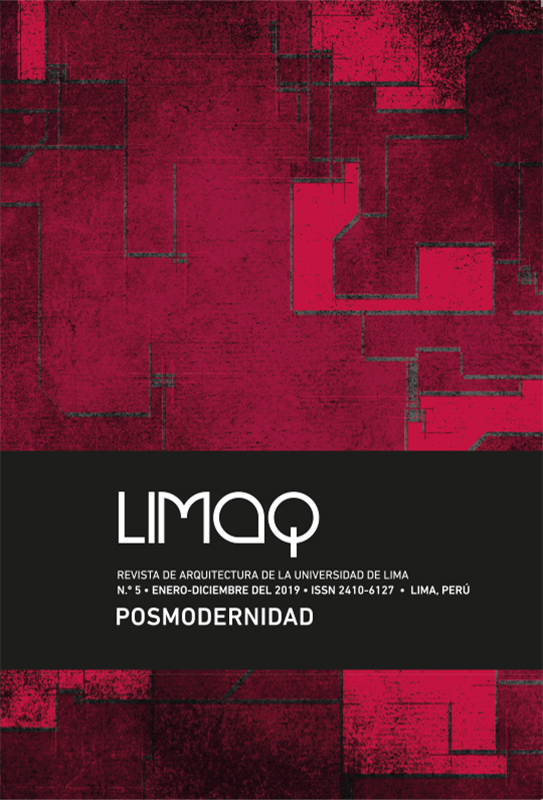Postmodern urbanism and architecture, whim or need?
DOI:
https://doi.org/10.26439/limaq2019.n005.4527Keywords:
Postmodernity, architecture, urbanism, Venturi, HeideggerAbstract
Even though there are some characteristics that distinguish postmodern urbanism and architecture, the trend is difficult to understand and it often prompts questioning its validity. This paper aims to demonstrate how and why the postmodern tendency, where current urbanism and architecture develop, represents an important part of the solution to the problems that trouble the world and is therefore a need. For that purpose, two fundamental texts of the movement that lead out to a new architectural reality will be analyzed: Complexity and Contradiction in Architecture by Robert Venturi, and Building Dwelling Thinking by Martin Heidegger.
Downloads
References
Best, S., y Kellner, D. (1991). Postmodern theory. Critical interrogations. Nueva York: Guilford Publications.
Building, dwelling, thinking by Martin Heidegger. (2006). En A. Hofstadter (trad.) [copia del texto publicado en Poetry, language, thought (1971), Nueva York: Harper Colophon Books]. Recuperado de http://faculty.arch.utah.edu/miller/4270heidegger.pdf
Fernie, E. (1995). Part III: Glosary of concepts. En Autor, Art history and its methods. A critical anthology (pp. 323-368). Londres: Phaidon Press Limited.
Jencks, C. (2002). The new paradigm in architecture: the language of post-modenism. Recuperado de https://books.google.ca/books?id=20bkru0gzCMC&printsec=frontcover&dq=charles+jencks&hl=en&sa=X&ved=0ahUKEwikjJedvbDaAhVrw4MKHQLtDvYQ6AEIKTAA#v=onepage&q&f=true
Lacasa, M. (28 de marzo del 2016). Un suave manifiesto a favor de una arquitectura equívoca [publicación en un blog]. Recuperado de https://axonometrica.wordpress.com/2016/03/28/un-suave-manifiesto-a-favor-de-una-arquitectura-equivoca/
Palmer, B. D. (agosto de 1993). Critical theory, historical materialism, and the ostensible end of marxism: the poverty of theory revisited. International Review of Social History, 38(2), 133-162. Recuperado de https://www.jstor.org/stable/44582244
Roth, L. M. (2007). Understanding architecture, its elements, history, and meaning. Boulder: Westview Press.
Rowe, C., y Koetter, F. (1996). Collage city. En K. Nesbitt, Theorizing a new agenda for architecture. An anthology of architectural theory 1965-1995 (pp. 266-293). Nueva York: Princeton Architectural Press.
Sharr, A. (2007) Heidegger for architects. Londres: Routledge.
Stierli, M. (22 de diciembre del 2016). Complexity and contradiction changed the way we look at, think and talk about architecture. The Architectural Review. Recuperado de https://www.architectural-review.com/rethink/reviews/complexity-and-contradiction-changed-how-we-look-at-think-and-talk-about-architecture/10015872.article
Venturi, R. (1992). Complexity and contradiction in architrecture (2.a ed.) [copia en PDF]. Nueva York: The Museum of Modern Art, in association with the Graham Foundation for the Advanced Studies in the Fine Arts.



